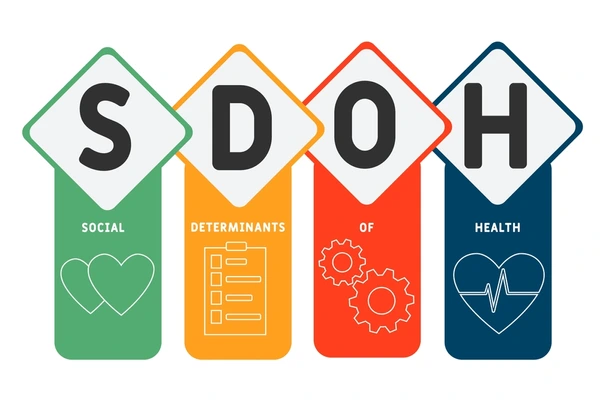In recent years, the concept of “social determinants of health” has become a focal point in public health discussions. But what does this term mean, and why is it so crucial for understanding health outcomes in our communities? Let’s delve into this topic and uncover the layers that influence our health beyond traditional medical care.
What are Social Determinants of Health?
Social determinants of health (SDOH) refer to the conditions in which people are born, grow, live, work, and age. These conditions are shaped by the distribution of money, power, and resources at global, national, and local levels. They include factors like socioeconomic status, education, neighborhood and physical environment, employment, and social support networks, as well as access to healthcare.
The Five Key Areas of Social Determinants of Health
The U.S. Department of Health and Human Services outlines five key areas of SDOH:
Economic Stability: This includes factors like employment, food security, housing stability, and poverty. Economic stability can significantly impact health, as those with steady jobs and sufficient income can afford better healthcare and nutritious food.
Education: Education plays a crucial role in health outcomes. Higher educational attainment is associated with healthier behaviors and better health outcomes. It also influences job opportunities and income potential.
Social and Community Context: This involves the relationships and social networks that provide support, including family, friends, and community ties. Social support can mitigate stress and provide emotional support, which are critical for mental and physical health.
Health and Healthcare: Access to healthcare services and the quality of those services directly affect health outcomes. This includes having health insurance, access to primary care, and health literacy.
Neighborhood and Built Environment: The physical environment where people live can affect their health. This includes access to healthy foods, quality of housing, crime and violence, and environmental conditions like air and water quality.

How Do Social Determinants Affect Health?
Income and Health: Income determines access to health-promoting resources such as nutritious food, safe housing, and medical care. Higher income levels are generally associated with better health outcomes. Conversely, poverty can lead to poor nutrition, substandard housing, and limited access to healthcare, increasing the risk of chronic diseases and mental health issues.
Education and Health: Education provides individuals with the knowledge and skills needed to make healthy choices. People with higher levels of education are more likely to engage in health-promoting behaviors such as regular exercise, healthy eating, and avoiding tobacco use. They are also more likely to have jobs that offer health benefits.
Social Support and Health: Strong social ties can improve mental health, reduce stress, and encourage healthier lifestyles. For example, individuals with supportive social networks are more likely to adhere to medical advice and less likely to engage in risky behaviors.
Environment and Health: The quality of the physical environment significantly impacts health. Living in neighborhoods with high pollution, poor housing, and limited access to healthy foods and recreational facilities can lead to poor health outcomes. Conversely, safe neighborhoods with access to parks, good schools, and healthy food options promote better health.
Addressing Social Determinants of Health
To improve health outcomes, it is essential to address the social determinants of health. Here are some strategies:
Economic Policies: Implementing policies that promote economic stability, such as raising the minimum wage, providing job training programs, and ensuring affordable housing, can improve health outcomes.
Educational Opportunities: Ensuring access to quality education for all, from early childhood through higher education, can have a lasting impact on health. This includes investing in schools, reducing dropout rates, and providing adult education and job training.
Community Support: Strengthening social support networks through community programs, mental health services, and initiatives that foster community engagement can improve health. This might include creating community centers, supporting family services, and promoting volunteerism.
Healthcare Access: Expanding access to healthcare through policies like Medicaid expansion, increasing the number of healthcare providers in underserved areas, and improving health literacy can directly improve health outcomes.
Improving the Environment: Addressing environmental factors by ensuring access to clean air and water, improving housing conditions, and creating safe recreational spaces can promote better health.
The Role of Public Health and Policy
Public health initiatives and policies play a crucial role in addressing social determinants of health. This involves a multi-sectoral approach, collaborating across various sectors such as education, housing, transportation, and employment to create healthier environments.
For example, public health campaigns can raise awareness about the importance of SDOH and advocate for policies that address these factors. Policies that provide social safety nets, such as unemployment benefits and food assistance programs, can mitigate the negative effects of economic instability on health.
Understanding and addressing the social determinants of health is essential for improving health outcomes and achieving health equity. By recognizing that health is influenced by a wide range of social, economic, and environmental factors, we can develop comprehensive strategies that go beyond healthcare to promote well-being for all.
To create healthier communities, it is vital to invest in policies and programs that address the root causes of health disparities. This holistic approach will help ensure that everyone has the opportunity to live a healthy, fulfilling life.


















